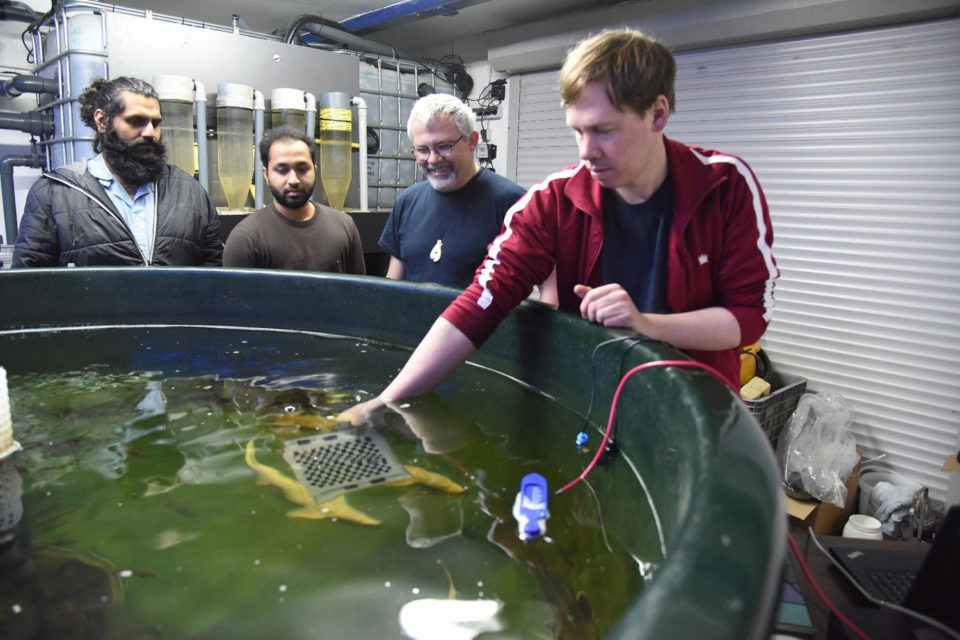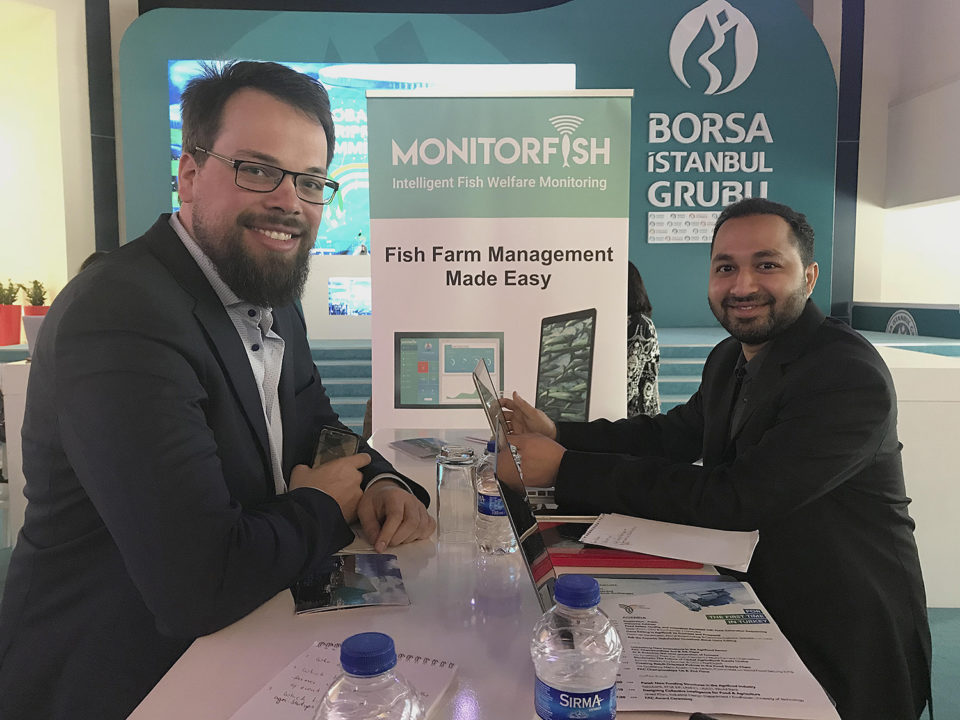German startup Monitorfish developing affordable fish welfare tech

Ralph Fisch knows a thing or two about being woken up in the middle of the night. In his 40 years of fish farming, he’s experienced some late-hour emergencies.
Fisch, senior fish health expert at Monitorfish, spoke to the Advocate in June about his startup company’s automated bio-analytic tool. The fact that he has a 6-month-old daughter further proves his knowledge of sleepless nights.
He also knows that if Monitorfish is to make a difference, the fish welfare technology it is developing must be affordable.
“Our system has to be developed for different groups of fish and types of farms, so that any small farmer can use the technology for the right size and type of fish they have – so a small farm can buy a system that’s not too expensive. Not everyone is Marine Harvest,” said Fisch, whose expertise is in bionics and engineering.
Monitorfish, based in Berlin, Germany, is a so-called “Internet of Things” tool that can enable fish farmers to keep a close watch on their stocks from their smartphones so they can raise the alarm in plenty of time when issues are detected. The system detects abnormal water quality (pH, temperature, ammonia), fish behavior, or appearance and also provides an action plan alongside the diagnosis, to help farmers to resolve the issue promptly.
“Monitoring systems are usually complex, or only for salmon, or large farms. Our goal is to have something to bring to a lot of small farmers,” Fisch said.
Monitorfish alerts farmers to issues before they occur, with a goal to avoiding fish loss and ultimately financial loss, as well as helping to avoid medical intervention. The artificial intelligence-based fish health analysis also takes on the time-intensive daily task of manually checking fish ponds, saving valuable man hours. Optical data and sensors check water quality and fish motion, explained CEO Chaitanya Dhumasker.
“The algorithm can tell us if the fish are healthy or not – and in case of a problem, we can provide a solution within the right time period, to save the fish,” he said.
Monitorfish is working with underwater imaging specialist Helmut Tödtmann from Fraunhofer Institute for Computer Graphics Research. A smart camera called “Optofish” is installed in the fish farm to identify fish and illnesses, sending a live feed of fish health analysis to a mobile phone. Optofish can retrieve visual details to help deliver relevant data, and even decipher fish generations.
“The stereo camera sensors installed in a pond system examine the fish movement and enable us to screen the fish skin, eyes, length and weight,” added CTO Dominik Ewald. “Right now, we are also scaling up to be able to give a close estimate to how many fish are in the tank. It’s not 100 percent accurate yet but can give a pretty close average estimation of the number of fish in the pond, so farmers know if the fish are growing properly, or if they have different generations.”
The connection with Fraunhofer, which claims to be Europe’s largest application-based research organization, began earlier this year. Monitorfish was awarded €60,000 funding as part of a program intended to promote projects between startups and institutes. The institute’s website cited the company’s “innovative strength and proximity to customer needs.”

As the company began reaching out to more and more fish farmers, they discovered a broad lack of education when it comes to fish welfare.
“Normally a good aquaculturist can look in his tanks and see what his fish need,” Fisch said. “He doesn’t need a monitoring system – but I know maybe only five or six farms across Germany with the right experience and education.”
He believes that new entrants to the industry may just be following a trend, or money trail: “Some farmers have just switched from pork to fish, without further education, and others are just investors who want to work in the food sector, but don’t have much experience.”
Monitorfish, which is in touch with producers across Germany, Portugal, Spain, India and Oman, hopes to secure seed funding by November, in order to have a product on the market in the first quarter of 2019.
Its pilot project, to be deployed in October, is focused on maraena whitefish, and will be implemented near Berlin in Eberswalde, using three recirculating pond systems. They will also test their system on shrimp aquaculture, with the help of the Alfred Wegener Institute in Germany.
“We want to build case studies to prove the effectiveness of the technology to the rest of the farming community, so they can have a quantifiable look before we scale up in the market,” Dhumasker said.
“I try to make aquaculture a little bit more sustainable,” added Fisch. “We have to at least try, because maybe in 10 years we won’t have the choice.”
At the very least, his technology can reassure producers that there is a watchman on duty.
“I work with farmers with old systems,” Fisch explained. “There are often problems – during the night we get sudden phone calls about a catastrophe. If farmers can be alerted to the problem earlier, we won’t have this problem again.”
Follow the Advocate on Twitter @GAA_Advocate
Author
-
Elizabeth Rushe
Elizabeth Rushe is a writer from Ireland, based in Berlin, covering sustainability and innovation in the food sector, whose work has been published by NPR, Vice, Fast Company and Civil Eats.
Related Posts

Innovation & Investment
Eight digital technologies disrupting aquaculture
Eight digital technologies are disrupting aquaculture and having a profound impact on the way business operates – even displacing some established ones.

Innovation & Investment
Fish farmers turn to drones for health, feed monitoring
Two technology startups are offering unique fish-monitoring solutions for aquaculture producers. Using algorithms, drones and computer vision software, Aquaai and Aquabyte aim to take labor-intensive and error-prone tasks out of human hands.

Innovation & Investment
Rise of the machines: Aquaculture’s robotic revolution
Technological advances are revolutionizing aquaculture. From airborne inspection tools to underwater drones, innovative robotics and automation technology are unveiling a brave new world of futuristic farming.

Innovation & Investment
One fish, two fish: Counting technology nets funding for Canadian engineering firm
XperCount, aka the “magic bucket,” uses optics and photonics to deliver 95 percent accurate count of microorganisms, such as fish or shrimp larvae, in just seconds.


